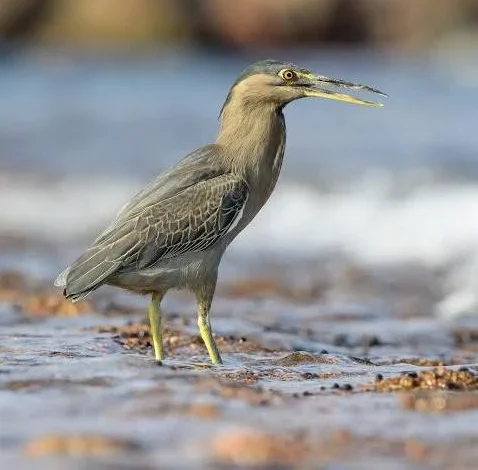Striated Heron spotted in Uttarakhand Hills, rare Gadwall seen in Baijnath

Striated Heron spotted in Uttarakhand Hills, rare Gadwall seen in Baijnath
Prem Prakash Upadhyay “Natural”
Bageshwar, Nov 20
For the first time, the Himalayan region of Uttarakhand have reported sightings of the Striated Heron and the rare Gadwall duck. These species traditionally migrated only to the plains during winters, but are now reaching the hills, swimming upstream along rivers.
A Gadwall was spotted in Garur, Bageshwar, indicating that changing climate patterns are affecting the migration routes and habitat range of many species. Birds that once settled along coastal areas, plains, bhabhars(tarai) and reservoirs are now making their way to the Himalayan foothills. The presence of the Striated Heron and Gadwall has been recorded in the lower Himalayan belt, at altitudes between 600 and 1,500 meters above sea level. Both species migrated towards the plains during winter months. But climate change is now visibly altering their behaviour. These birds are travelling upstream through rivers into mountainous regions.
The findings from a recently conducted bird count survey have surprised experts. Birds that once flew only up to Sitarganj, Haldwani, and Nanakmatta during their migration were spotted deep in the hills this time.
The sighting of a Striated Heron (locally known as Dhariyadar Bagula) in Kapkot and a Gadwall (a duck species) in Baijnath has astonished ornithologists. Kapkot is located at an elevation of 1,150 metres, while Baijnath stands at roughly 1,130 metres heights where these birds are rarely seen.
As humans continue to migrate from mountains to cities, metros, birds appear to be doing the opposite moving towards the hills. Migratory species that usually visit plain-region wetlands in winter are now choosing Himalayan rivers as their new stopovers. Expert says adaptation to local temperatures, new food sources in the rivers, and reduced competition are driving these birds toward fresh habitats.

A total of 43 bird species were recorded in the Kapkot and Garur areas of Bageshwar district. The survey was led by physicist Dr. Deepak Kumar, along with Dr. Bharat Giri and their team. The campaign confirmed the presence of Striated Heron, Gadwall, and additionally the Great Cormorant, which arrived in the district on schedule with the winter season.
A small, agile bird that waits quietly along water edges to catch prey is usually known straited birds. This is Usually found in coastal zones, mangroves, and plain-region wetlands.Its presence in Himalayan rivers is considered extremely rare.
On the other hand, a grey-brown coloured dabbling duck known for its excellent swimming ability. A winter migratory species typically seen in plains lakes, ponds, and marshes. These bird feeds on aquatic plants, grass, and small water creatures. Its appearance in Himalayan rivers signals a significant shift in migratory patterns. Environmentalist and experts consider it an indicator of climate change.
“Climate change is affecting bird behaviour. Birds are expanding their range. The presence of Gadwall in Baijnath and the Striated Heron in Kapkot is unusual. The Great Cormorant was also spotted this season,” said Dr. Deepak Kumar, Researcher & Professor.
“These species usually migrate to plains in winter, but now they are extending their reach into the hills. They are adapting well to the local climate. The availability of diverse food options in rivers may be encouraging them to settle in mountainous areas,” Rajesh Bhatt, a bird expert, from Corbett National Park, Ramanagar, Nainital.





